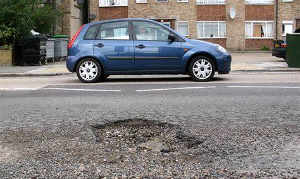California Offers Low Income Residents $27,000 to Buy EVs if They Can Figure out How to Apply

Image: Jeff Chiu (AP)
California is the poster child of EV adoption. The good news is that the market share of EVs in California rose 17 percent in 2022. Looking past those glowing numbers, however, hides an unfortunate reality some may not want to talk about: EVs are still too expensive, and a lot of buyers in the state can’t afford housing, let alone an electric car. The good news is that there’s help; The Sacramento Bee reports The Golden State will give low-income residents up to $27,000 for help purchasing an EV. That is, if they can figure out if they qualify and how to apply.
Even though there is assistance available for residents of the Golden State, some may find the programs hard to understand or confusing. The main program most residents may take advantage of is the federal tax credit. It can be used on new EVs if your income is less than $150,000 and on used EVs if your income is under $75,000. But it can be confusing, as most people think that the credit takes something off the price of the EV; it doesn’t. It’s a tax credit and can really only be taken advantage of if you have a tax liability. Even more confusing are the rules and qualifications for what vehicles can and can’t qualify for the credit. This law, though, is one that everyone in the U.S. is struggling with.
One of the bigger state programs called Clean Cars 4 All which can offer up to $12,000 in incentives. But it’s only run by five air districts across the state. And to get the full $12,000, you have to be in a household that’s 225 percent of the federal poverty level; 300 percent of the poverty level, and you get $10,000. But that’s even if one can find out if they’re near the poverty level or not. To do so requires you to read a confusing income level chart and find out if you live in an eligible zip code.
There are also a variety of rebates available through the California Air Resources Board. There, residents can apply for rebates on a variety of ZEV (Zero Emission Vehicles) on the market, from the Hyundai Nexo to the Ford Mustang Mach-E. But the requirements for applying for a rebate are long: lots of documents are needed, and not every EV or ZEV is available for a rebate (for instance there’s only the Audi Q4, and no Teslas or Polestar). And funds for the program may not even be available.
Unfortunately, this can all be very confusing. Román Partida-López, transportation equity legal counsel at the Oakland-based Greenlining Institute told The Sacramento Bee that everything just needs to be made easier. “Streamlined applications, more money for used cars and targeting specific communities must all be part of increasing ZEV access,” she said.




